 2011 Ford Explorer V Dimensions, Size & Specs
2011 Ford Explorer V Dimensions, Size & SpecsMeasurements of the 2011 Ford Explorer V, engineered for optimal performance and comfort
| Dimensions | |
|---|---|
| Length: | 5006 mm197.1 in16.4 ft |
| Width: | 2004 mm78.9 in6.6 ft |
| Width (Folded Mirrors): | 2096 mm82.5 in6.9 ft |
| Width (Opened Mirrors): | 2291 mm90.2 in7.5 ft |
| Height: | 1788 mm70.4 in5.9 ft |
| Ground Clearance: | 193 mm7.6 in0.6 ft |
| Trunk Capacity: | 595 liter21.0 cu ft |
| Trunk Capacity (Max): | 2285 liter80.7 cu ft |
| Tire Specifications | |
| Rims Sizes: | 17-inch rims:
|
| Tire Sizes: |
|
The Ford Explorer V, produced from 2011 to 2016, is a mid-to-large size SUV that balances spaciousness with versatile performance. Measuring 5006 mm (197.2 inches) in length, this generation offers ample room for passengers and cargo. Its width measures 2004 mm (78.9 inches) without mirrors, extending to 2291 mm (90.2 inches) with mirrors fully opened, which is important to consider for urban parking or tight spaces. The vehicle stands 1788 mm (70.4 inches) tall, providing commanding road presence and headroom inside.
Cargo capacity is a highlight of the Explorer V, with 595 liters (21.0 cubic feet) available behind the rear seats for everyday use. When rear seats are folded down, the space expands significantly to 2285 liters (80.6 cubic feet), supporting large loads and bulky items essential for family trips or outdoor adventures.
The ride height or ground clearance is 193 mm (7.6 inches), enabling this SUV to handle moderate off-road conditions or rough terrain with confidence. Various rim sizes ranging from 17 to 20 inches offer customization options for style and driving dynamics. Corresponding tire sizes include 245/65 R17, 245/60 R18, and 255/50 R20, tailored for a balance of comfort, grip, and durability.
Overall, the Ford Explorer V (2011-2016) combines a robust SUV profile with practical dimensions suitable for families and active lifestyles, presenting a versatile option in its class.
Discover the standout features that make the 2011 Ford Explorer V a leader in its class
Have a question? Please check our knowledgebase first.
The 2011-2016 Ford Explorer V has a length of 5006 mm (197.2 inches), a width of 2004 mm (78.9 inches) without folding mirrors, and a height of 1788 mm (70.4 inches). These dimensions make it a spacious mid-size SUV suitable for families needing ample interior space and a commanding road presence.
The Ford Explorer V measures 2096 mm (82.5 inches) wide with the mirrors folded, and 2291 mm (90.2 inches) wide with mirrors unfolded. This nearly 20 cm (7.8 inches) difference means parking in narrow spaces or garages can be challenging with mirrors out. Folding the mirrors helps navigate tighter parking spots, making it easier to maneuver in urban or crowded environments.
The Explorer V offers a ground clearance of 193 mm (7.6 inches), which is considered moderate for an SUV in this class. This clearance allows it to handle rough terrains and some light off-road driving while maintaining a comfortable ride height for daily urban and highway use. It strikes a good balance between accessibility and capability.
With the rear seats upright, the Ford Explorer V provides 595 liters (21 cubic feet) of cargo space, which is ideal for groceries, sports gear, or small luggage. When the rear seats are folded flat, the cargo capacity expands dramatically to 2285 liters (80.6 cubic feet), offering a large, versatile area to haul bulky items, making it very practical for road trips or transporting large equipment.
The average single-car garage door width ranges from 2400 mm (94.5 inches) to 2700 mm (106 inches), and typical garage depth is about 6000 mm (236 inches). With a width of 2004 mm (78.9 inches) without mirrors and length of 5006 mm (197.2 inches), the Explorer V fits comfortably inside standard garages. However, when mirrors are unfolded (2291 mm/90.2 inches wide), extra care is needed to avoid damage, and folding mirrors is recommended.
Compared to the fourth-generation Ford Explorer (2006-2010), the Explorer V is generally larger, notably in length and width. The fifth generation at 5006 mm (197.2 inches) is longer, providing more interior space and improved cargo capacity. This size increase also enhanced interior comfort and third-row seating usability, though it made the vehicle slightly less nimble in tight urban environments compared to its predecessor.
The Ford Explorer V is positioned among mid-size SUVs and compares closely with models like the Toyota Highlander, Honda Pilot, and Chevrolet Traverse. Its length of 5006 mm (197.2 inches) and width roughly 2004 mm (78.9 inches) place it slightly above average in size, giving it an edge in cargo space and passenger room. Some competitors may be narrower or shorter, benefiting maneuverability, but the Explorer V offers a good balance of interior spaciousness and road presence.
The Explorer V offers rim sizes ranging from 17 to 20 inches, specifically 7.5J x 17, 8J x 18, 8.5J x 18, and 8.5J x 20. Tire sizes include 245/65 R17, 245/60 R18, and 255/50 R20. Larger rims with lower-profile tires (like 20 inches) tend to improve road handling and cornering at the expense of ride comfort, whereas smaller rims with higher-profile tires (17-18 inches) provide a smoother ride with better shock absorption on rough roads.
The 2011-2016 Ford Explorer V typically weighs between 2,100 to 2,200 kg (roughly 4,630 to 4,850 lbs), depending on specific trim and drivetrain configurations. Weight affects fuel efficiency, with heavier models consuming more fuel. Generally, fuel economy ranges from approximately 12 to 14 L/100 km (20-25 mpg US) in combined driving for V6 models, reflecting its size and weight, while still offering competitive performance for an SUV in this class.
The Ford Explorer V marked a significant redesign from prior generations, shifting to a unibody construction from the previous body-on-frame design. This change improved ride comfort, handling, and fuel efficiency. The generation also introduced more modern styling with sleeker lines and a more aerodynamic profile. Inside, it offered better interior quality, enhanced technology features, and increased cargo and passenger space, making it more family-friendly and versatile.
Discover similar sized cars.
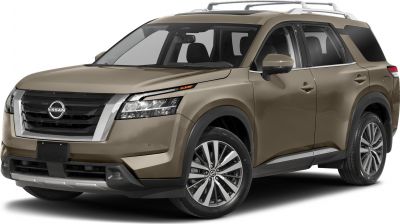
| Production: | 2021-present |
|---|---|
| Model Year: | 2022 |
| Length: | 5004-5022 mm197.0-197.7 in |
| Width: | 1979 mm77.9 in |
| Height: | 1796-1802 mm70.7-70.9 in |
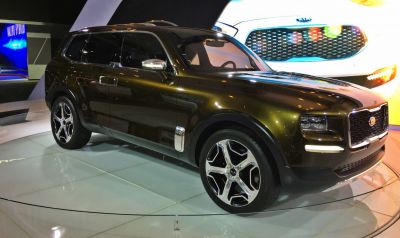
| Production: | 2016-2019 |
|---|---|
| Model Year: | 2020 |
| Length: | 5001 mm196.9 in |
| Width: | 2009 mm79.1 in |
| Height: | 1801 mm70.9 in |
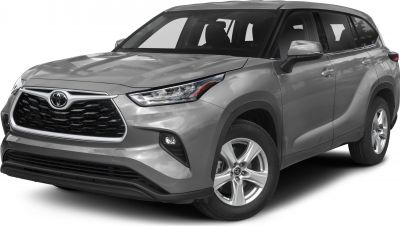
| Production: | 2020-present |
|---|---|
| Model Year: | 2020 |
| Length: | 4950 mm194.9 in |
| Width: | 1930 mm76.0 in |
| Height: | 1730 mm68.1 in |
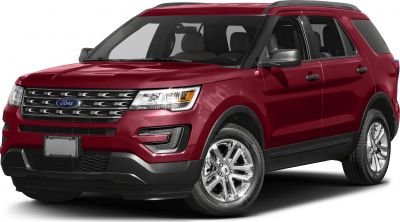
| Production: | 2016-2018 |
|---|---|
| Model Year: | 2016 |
| Length: | 5019 mm197.6 in |
| Width: | 2291 mm90.2 in |
| Height: | 1788 mm70.4 in |

| Production: | 2019-2022 |
|---|---|
| Model Year: | 2020 |
| Length: | 4991 mm196.5 in |
| Width: | 1996 mm78.6 in |
| Height: | 1793 mm70.6 in |
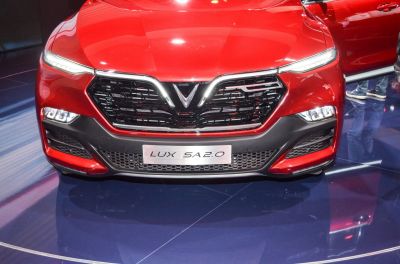
| Production: | 2019-present |
|---|---|
| Model Year: | 2019 |
| Length: | 4940 mm194.5 in |
| Width: | 1960 mm77.2 in |
| Height: | 1773 mm69.8 in |

| Production: | 2023-2024 |
|---|---|
| Model Year: | 2023 |
| Length: | 4949 mm194.8 in |
| Width: | 1950 mm76.8 in |
| Height: | 1725 mm67.9 in |

| Production: | 2021-present |
|---|---|
| Model Year: | 2021 |
| Length: | 4966 mm195.5 in |
| Width: | 1930 mm76.0 in |
| Height: | 1755 mm69.1 in |
